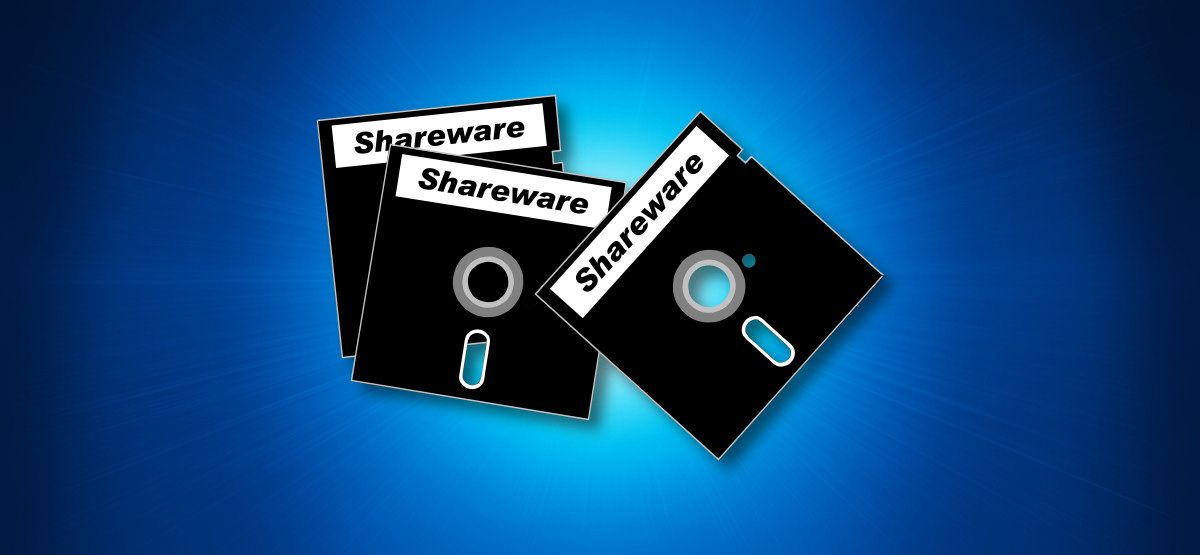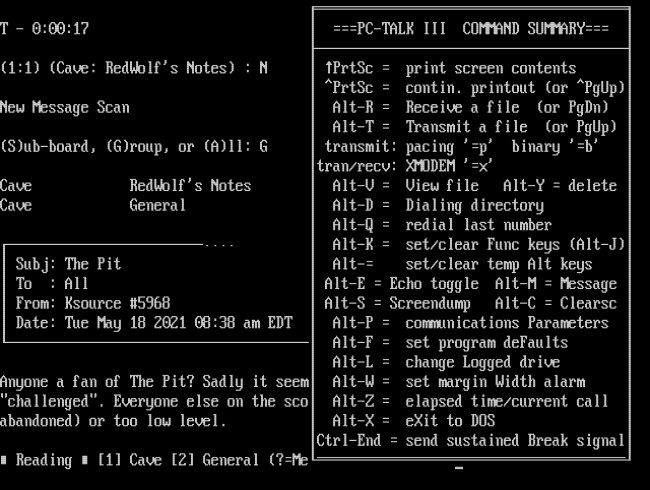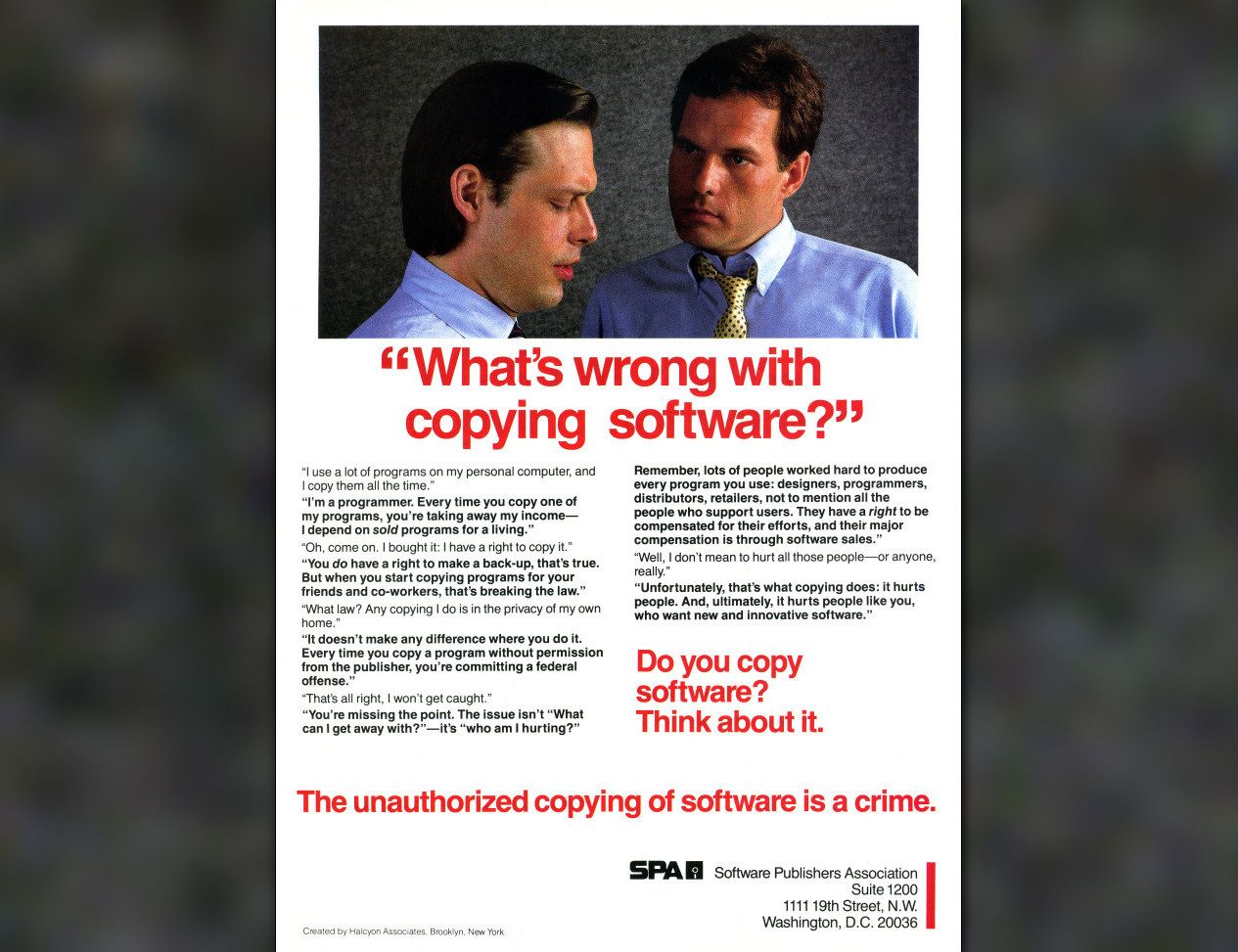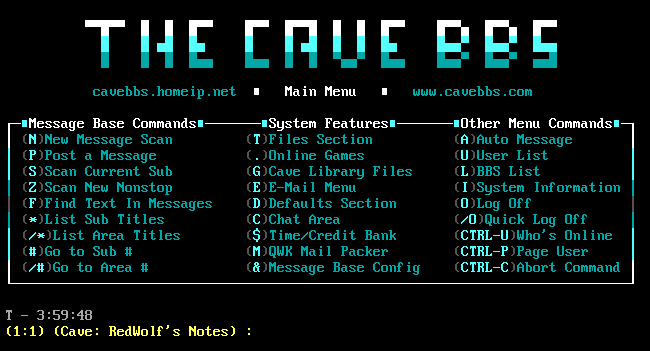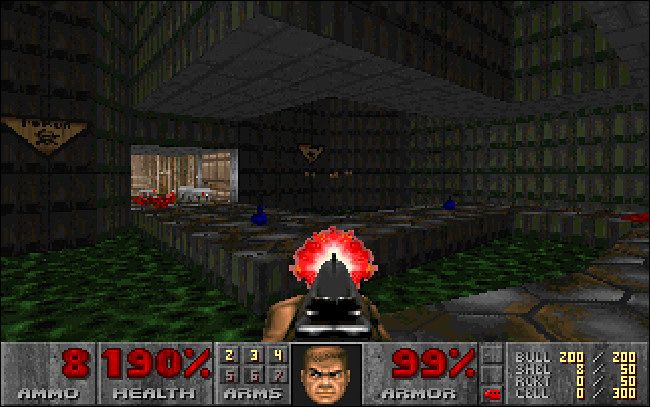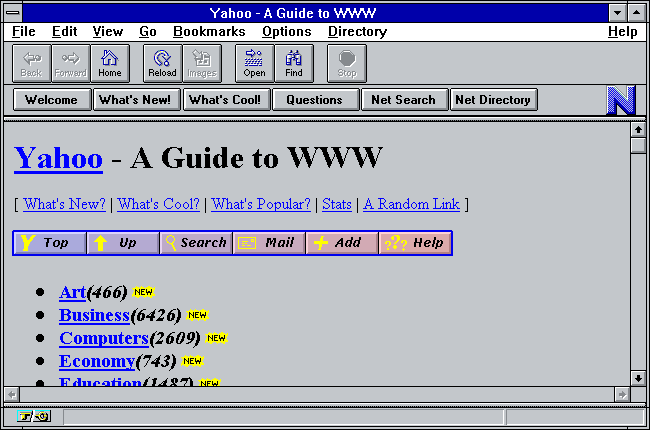Quick Links
It's a crazy idea: Give your software away for free and hope that people like it enough to send you money. That was the idea behind shareware, a popular commercial software model in the 1980s and 1990s. Here's what made it unique and successful at the time.
The Origins of Shareware
Historians usually credit three men with the creation of the shareware concept---to varying degrees.
In 1982, Andrew Fluegelman created a telecommunications program called PC-Talk on his new IBM PC and began sharing it with his friends. Before long, he realized that he could put a special message inside the software asking for a $25 donation in return for future updates to the program. (Fluegelman called his concept "freeware," but he reportedly later trademarked the term, leading to its limited use in the industry. The term was redefined after his death in 1985.)
The Computer Chronicles did a short profile on Fluegelman's company in 1985. It starts at 16:12 in the video below.
Also, in 1982, another programmer hit on the same concept as Fluegelman. Jim Knopf (known as "Jim Button" professionally) created a database program for the IBM PC called Easy File and began to share it with his friends. Like Fluegelman, he realized that he could ask for a donation (in his case, $10 at first) to help offset the costs of further development and sending out updates. Knopf called his concept "user-supported software." Soon, Knopf and Fluegelman began corresponding, and Knopf retitled his program PC-File to match Fluegelman's PC-Talk, and they both settled on a $25 suggested donation fee.
By 1983, the shareware concept had become established, but its name had not yet cemented in the culture. In early 1983, former Microsoft employee Bob Wallace changed that by creating a word-processing application called PC-Write. In the process, he coined the term "shareware" to describe the user-supported software model pioneered by Fluegelman and Knopf (He had also been inspired by an Infoworld column of the same name.). With a solid, freely available name in place, the shareware concept had nowhere to go but up.
Why Shareware Was Revolutionary
At the time that Flugelman and Knopf hit upon the idea for shareware, most commercial application software was very expensive, often retailing in the hundreds of dollars per package. Software publishers often relied on draconian copy protection schemes to prevent customers from making unauthorized copies of the software. In fact, piracy---the unauthorized duplication and distribution of commercial software---was widely feared as a destructive force in the computer industry.
In the midst of that climate, the idea that you could write a high-quality program, encourage people to give it away to their friends, and then hope that they like it enough to voluntarily send you money sounded ludicrous. But something amazing happened when both Fluegelman and Knopf tried the concept: They both became millionaires. In one account, Knopf described the response as overwhelming, with sacks upon sacks of mailed inquiries arriving at his house.
Shareware didn't treat customers like potential criminals. The concept implied dignity and respect for the end-user that was often lacking in big commercial software packagers. Less altruistically, it also took advantage of the unofficial user-to-user software distribution network that arose because software was so easy and cheap to copy.
From a user's point of view, shareware was attractive because it let them try applications at no cost before they bought them, which was a novel concept in the industry at the time. Instead of shelling out $795 for a database package that you found unappealing and never used, you could get one for free and send money to the author only if you found it useful.
Shareware Went Hand-in-Hand with Electronic Communications
At the genesis of his "freeware" idea, Fluegelman offered to distribute PC-Talk to anyone who mailed him a blank floppy disk. But as modem-to-modem communications and file transfers on the IBM PC platform became easier (thanks in large part to PC-Talk itself), people began trading shareware on bulletin board systems (BBSes) and on commercial online services like CompuServe and GEnie.
The most exciting thing about BBSes for a shareware author is that they represented an alternative distribution channel for their product. No longer did a developer have to sign with a publisher, design and produce a retail package, print a manual, find a distributor that had partnerships with software retail stores or dealer networks, and then hope for royalties. All that overhead likely accounted for a large part of the high price of software at the time.
In contrast, a shareware author could be a one-person operation working out of a residential address. Frequently, shareware manuals were electronic and included with the software itself, and the most significant distribution cost came when mailing out updates using a blank floppy disk, an envelope, and a stamp. Later, with the advent of registration codes that unlocked features in the software, the cost dropped even further, requiring only a letter or even an electronic transmission to complete a sale.
Some Famous Shareware Programs
Shareware wasn't limited to just the IBM PC platform. It soon spread to Macintosh, Amiga, Atari ST, and beyond. But some of the most influential shareware programs originated on the IBM PC and Macintosh platforms in the 1980s and early 1990s. Here are a few of them.
- PC-Talk III (1983): The most popular version of Andrew Fluegelman's terminal emulation package that started the shareware revolution and jump-started modem-to-modem file sharing on the IBM PC platform, written in IBM PC BASIC.
- StuffIt (1987): This Macintosh-based compression program that shrunk file sizes for easier transmission or storage became as essential to Macs as PKZIP would become to PCs.
- PKZIP (1989): A very popular file compression tool for IBM PC-compatible machines.
- Kingdom of Kroz II (1990): The first PC game distributed under Scott Miller's Apogee shareware model that released the first episode for free but sold additional levels for a fee. This model revolutionized the shareware games industry.
- WinZip (1991): This originated as a graphical front-end for PKZIP on Windows and later evolved into a more fully featured product that was essential in the Windows 95 and 98 era.
- ZZT (1991): Tim Sweeney's first PC game shipped with a built-in game editor. It launched Epic Games and paved the way for Unreal Engine and Fortnite.
- Doom (1993): id Software's groundbreaking first-person shooter originated as a shareware title. Episode 1 was free, but you had to send money to get the rest of the game.
- Netscape Navigator (1994): While never marketed as "shareware," this pioneering web browser did ship as a free-to-download evaluation version that almost everyone used without ever paying a dime.
- WinRAR (1995): Another well-known compression utility for Windows, famous for its ability to break up large files into multi-file chunks.
- Winamp (1997): A popular and influential MP3 player for Windows in the late 1990s and early 2000s.
Hundreds of thousands of shareware programs have been developed over the past 39 years (although we have not made a precise count), so this list only scratches the surface of historically important software. Each computer platform played host to its own roster of essential shareware games, applications, and utilities.
What Happened to Shareware?
With the rise of the internet and the World Wide Web, it became easier not only to distribute software, but also, to directly sell software electronically. Potential customers could directly visit the developer's website, pay with a credit card, and download an application or a game, making the pass-it-around model of shareware less necessary as a distribution network.
In the second half of the 1990s, the term "shareware" began to lose favor versus terms like "trial" or "demo" software that someone could try for free before buying---either through retail or directly through the internet. In that sense, shareware never completely disappeared. It just transformed and became a mainstream distribution model.
At the same time, the rise of open-source software on the internet in the mid-late 1990s provided an alternative philosophy for free software that encouraged developers to collaborate on high-quality free software applications (and encouraged everyone to share it for free), making commercial shareware software less necessary and popular.
More recently, the rise of DRM and app stores has locked software down to user accounts, making passing around even demo versions of a game or program illegal or impractical. On some platforms like iPhone, it's impossible to legally share software at all---not without jailbreaking or compiling an app's source code and sideloading it with Xcode. Today, with open platforms like Macintosh and Windows clamping down on unsigned software, the days where you can download a program from a random indie developer and run it might be numbered.
So today, an independent app developer is far more likely to place a program or game on an app store instead of encouraging users to help distribute it for them, although shareware does still exist.
How to Find Classic Shareware Today
If you're interested in reliving the glory days of PC or Mac shareware, there are sites on the internet that have collected tens of thousands of programs that you can explore.
- RGB Classic Games: A great source of shareware games for computers running MS-DOS.
- DOS Games Archive: Another good source of DOS shareware games and demos.
- The Cave BBS File Section: An online archive of files taken from the author's BBS that ran from 1992 to 1998. Plenty of games and utilities, mostly for DOS and Windows, but also for Macs.
- Shareware CD-ROMs at the Internet Archive: This is a massive collection of CD-ROMS that themselves were collections of shareware back in the day. (Be aware that some of the contents on the discs may be NSFW.)
- Textfiles CD-ROM Collection: Archivist Jason Scott hosts a large collection of shareware CD-ROMs that are easily browseable without having to download an entire disc image. (This site may also contain some adult content.)
- The Macintosh Repository: This site hosts thousands of vintage Mac programs, both shareware and otherwise.
- University of Michigan Archives: These legendary archives host shareware programs for Apple II, Atari, Macintosh, and IBM-compatible computers.
Keep in mind that most of these vintage programs require an emulator like DOSBox (or a real vintage computer) that will let you run them. Enjoy!

